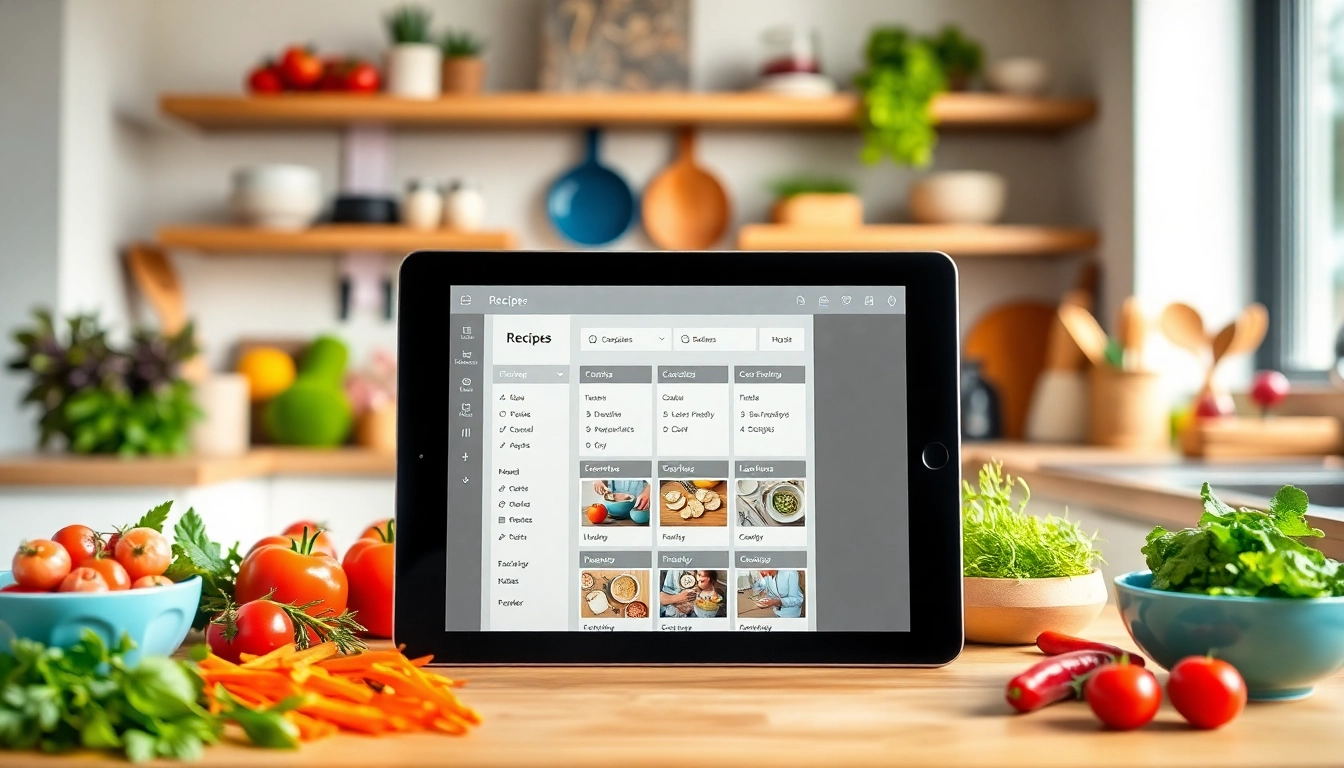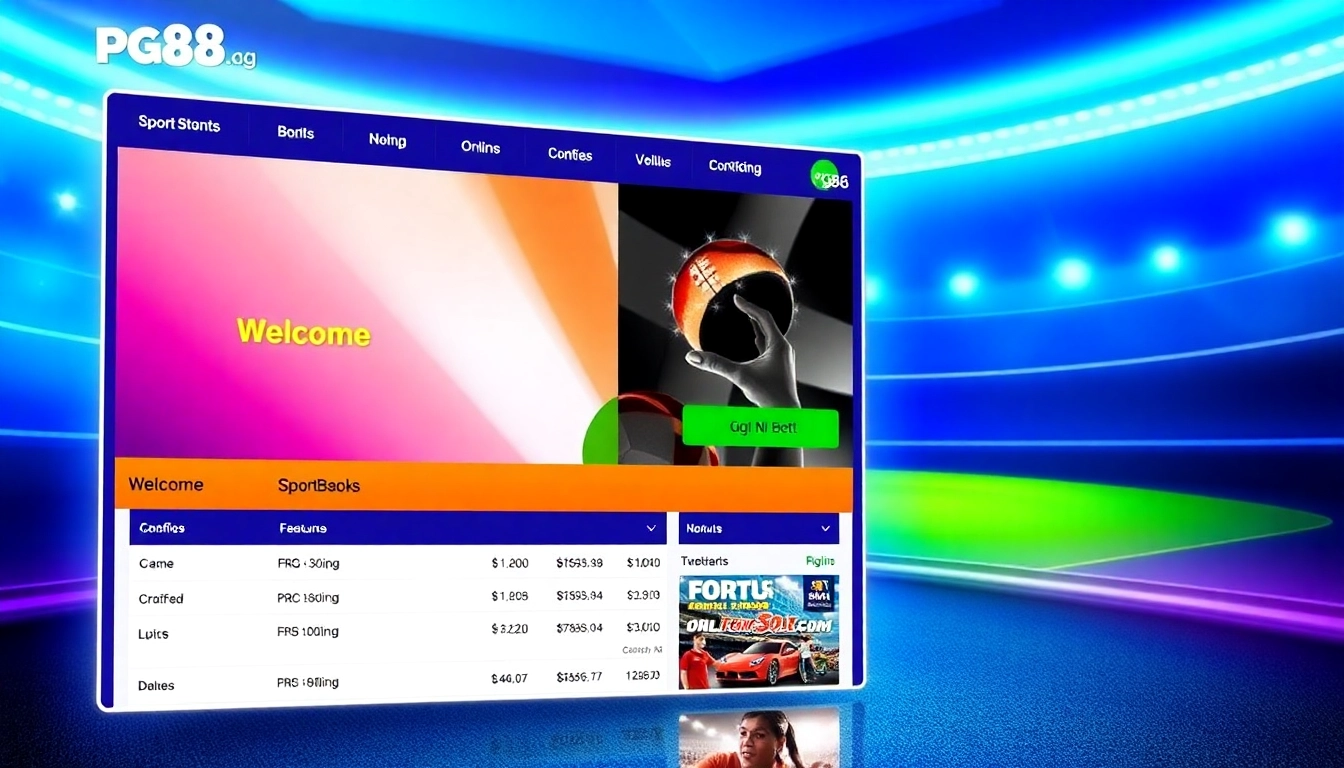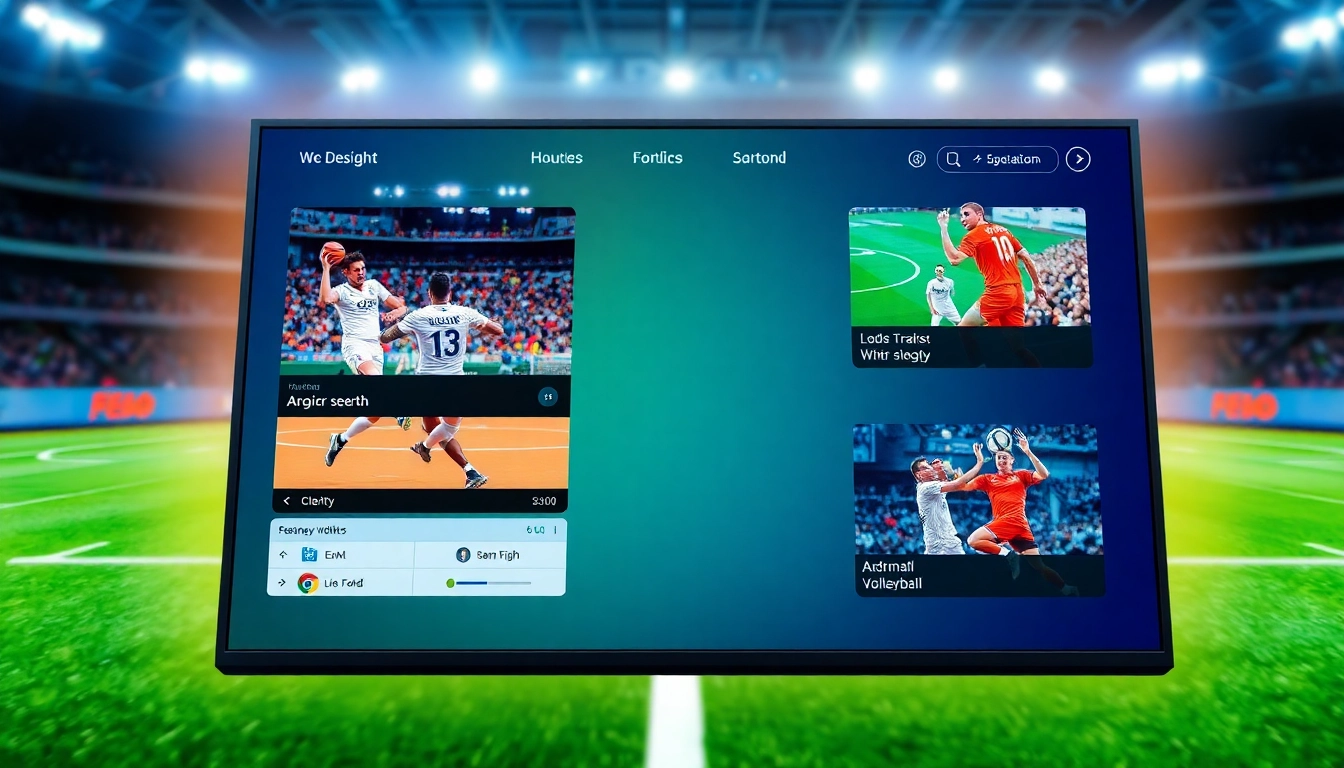Introduction to Recipe Managers: Simplifying Cooking and Organization
In today’s fast-paced world, home cooks and professional chefs alike seek efficient ways to organize their culinary creations and streamline their meal planning processes. Enter the recipe manager: a digital solution designed to keep all your recipes, meal plans, shopping lists, and culinary notes in one centralized, easy-to-access platform. With advancements in technology, recipe management software has evolved far beyond traditional handwritten collections, now offering dynamic features that cater to various needs—from casual home cooking to professional kitchen workflows.
Understanding what a recipe manager is, how it works, and why it’s become an essential part of modern cooking can significantly enhance your culinary efficiency and enjoyment. This comprehensive guide explores the ins and outs of recipe management systems, helping you choose the right tool, implement it effectively, and maximize its benefits for your cooking routine.
What is a Recipe Manager and How Does It Work?
Defining the Recipe Manager
A recipe manager is a specialized software designed to store, organize, and manage cooking recipes digitally. Unlike simple note-taking apps or spreadsheets, high-quality recipe management tools often include features such as ingredient scaling, meal planning, grocery list generation, dietary filters, and seamless integration with web browsers for quick recipe saving. These systems are available across various platforms, including web, mobile applications, and desktop software, enabling users to access their culinary library from anywhere.
At its core, a recipe manager operates as a database that categorizes recipes by cuisine, difficulty, ingredients, dietary preferences, and meal types. Users can add new recipes manually, import from websites, or scan and upload handwritten notes. Advanced solutions may provide nutritional analysis, allergy alerts, and integration with smart kitchen devices, creating a comprehensive ecosystem for culinary management.
How Does It Work in Practice?
Most recipe managers incorporate intuitive interfaces that allow users to input recipes through various means—manual entry, importing from web pages, or photo scanning. Once stored, recipes are easily searchable and customizable. For instance, if you need to scale a recipe to serve more guests or reduce ingredients for a quick snack, a recipe manager automates that process, maintaining the proportions and providing accurate conversions.
Another key functionality is meal planning, where users can assign recipes to specific days, create shopping lists automatically from needed ingredients, and track pantry stock. This integrative approach reduces food waste, saves time, and makes meal prep more organized. Additionally, many apps sync across devices, ensuring your culinary library stays updated whether on a smartphone, tablet, or desktop, and support sharing features that allow collaboration with family members or colleagues.
For example, some popular solutions like Paprika and CookBook offer browsers to save recipes directly from websites, extensive categorization options, and multi-device syncing. Others such as RecipeSage or Obsidian can be customized for more advanced or niche culinary workflows.
Why Every Home Chef Needs a Recipe Management Tool
Enhancing Efficiency and Reducing Clutter
Traditional recipe collections—whether handwritten or digital—can quickly become disorganized and difficult to access during cooking. A dedicated recipe manager brings order to this chaos by centralizing all recipes in a searchable, categorized library. This clarity accelerates meal prep and reduces frustration, especially when juggling multiple recipes or dietary restrictions.
Streamlining Meal Planning and Grocery Shopping
Meal planning becomes effortless with recipe management software that integrates recipes with shopping lists. Instead of manually jotting down ingredients or hunting through various folders, users can generate a shopping list automatically, reducing time spent on grocery shopping and minimizing impulse buys or forgotten ingredients. This approach not only saves time but also promotes healthier, more intentional eating habits.
Supporting Dietary Needs and Personal Preferences
Many recipe management tools allow filtering recipes based on dietary restrictions such as gluten-free, vegan, low-carb, or allergen-free options. Personalized tags enable users to quickly identify suitable recipes, making meal customization easier and more efficient. This feature is particularly invaluable for families or individuals managing specific health conditions or dietary goals.
Preserving Family Recipes and Culinary Heritage
Digitizing handwritten or printed recipes helps preserve culinary traditions, making them accessible for future generations. Sharing digital recipes with family members encourages collaboration and keeps cherished dishes alive, fostering culinary continuity.
Facilitating Better Cooking Outcomes
Recipe managers often include step-by-step instructions, timers, and even multimedia content to assist cooks. Enhanced guidance reduces errors, increases confidence, and improves overall culinary outcomes—perfect for beginners seeking structured guidance or seasoned chefs experimenting with new recipes.
Current Trends in Recipe Management Software
Integration with Smart Devices and IoT
Modern recipe managers are increasingly integrating with smart kitchen appliances such as connected ovens, sous-vide devices, and pantry sensors. These integrations enable automatic updates on ingredient quantities, cooking temperatures, and timers, creating an interconnected cooking environment that enhances precision and convenience.
Artificial Intelligence and Personalization
AI-driven features now personalize recipe suggestions based on user preferences, dietary habits, and past cooking behavior. Some systems analyze nutritional data, suggest modifications for healthier options, or recommend recipes utilizing ingredients already in your pantry, minimizing waste and optimizing resources.
Cloud-Based Collaboration and Sharing
With rise in social sharing, many recipe apps offer community features, allowing users to upload, review, and collaborate on recipes. Cloud synchronization ensures that recipe collections are accessible across multiple devices and shared seamlessly with family or friends, making meal planning a collaborative effort.
Emphasis on Sustainability and Minimalism
Current trends favor minimalistic UI designs, easy import/export options, and lightweight solutions that focus on core functionalities to avoid overwhelming users. Sustainability-minded features such as digital pantry tracking and eco-friendly shopping lists further align with broader environmental goals.
Adoption of Open-Source Solutions
Open-source recipe managers like RecipeSage or custom solutions built on platforms like Obsidian appeal to tech-savvy users who seek customizable, privacy-respecting alternatives to commercial apps. These solutions often offer community-driven improvements and richer control over data management.
Choosing the Right Recipe Manager for Your Needs
Key Features to Look For in a Recipe Organizer
- Ease of Use: Intuitive interfaces that require minimal learning curve.
- Import/Export Capabilities: Ability to import recipes from websites, PDFs, or photos, and export for backup or sharing.
- Meal Planning & Grocery Lists: Integrated tools for planning weekly menus and generating shopping lists automatically.
- Tagging & Categorization: Flexible organization through tags, categories, and custom filters.
- Synchronization & Cloud Storage: Multi-device syncing with secure cloud backups.
- Dietary & Nutritional Tracking: Filters for dietary restrictions and nutritional analysis.
- Customization & Automation: Personalized features like automation of repetitive tasks or custom recipe fields.
Comparing Popular Recipe Management Apps
Popular apps such as Paprika, CookBook, RecipeSage, and Obsidian vary significantly in their features, pricing, and target audiences.
- Paprika: Widely praised for its comprehensive recipe saving from web pages, meal planning, and grocery list features. Available on iOS, Android, Windows, and Mac, with a one-time purchase model.
- CookBook: An all-in-one platform supporting web, desktop, and mobile, emphasizing organization, meal planning, and shopping lists, with options for collaborative sharing.
- RecipeSage: Open-source and free, appealing to users wanting a customizable, privacy-focused solution. Suitable for tech-savvy users comfortable with self-hosted or DIY setups.
- Obsidian: Highly customizable, ideal for users who prefer constructing their own workflow using markdown files and linking notes, suited for those with technical expertise.
Free vs Paid Recipe Management Solutions
While free options like RecipeSage and some open-source platforms appeal for their cost-effectiveness, paid solutions such as Paprika or CookBook often provide more polished interfaces, dedicated customer support, and advanced features like syncing, cloud storage, and integrations. When choosing, consider your budget, technical comfort level, and required features.
Implementing Your Recipe Management System
Step-by-Step Guide to Setting Up Your Digital Recipe Book
- Assess Your Needs: Determine what features are essential, such as meal planning, dietary filters, or collaborative sharing.
- Select a Suitable Platform: Choose an app or software aligned with your preferences and technical comfort.
- Gather Existing Recipes: Collect handwritten notes, printed recipes, and web-based favorites.
- Import or Input Recipes: Use import features or manually enter key recipes, ensuring to categorize correctly.
- Organize Your Recipes: Tag and categorize recipes by type, cuisine, or dietary restrictions to facilitate quick retrieval.
- Create Meal Plans and Shopping Lists: Assign recipes to days, generate shopping lists, and track pantry stocks.
- Sync and Share: Enable cross-device synchronization and share with family members or co-cooks as needed.
Organizing Recipes and Meal Plans Efficiently
An efficient system involves grouping recipes into well-defined categories—appetizers, main courses, desserts, vegetarian, gluten-free, etc. Use tags to track ingredients, difficulty level, or occasion. Setting up templates for common dishes speeds up data entry, and utilizing search filters ensures swift access during busy cooking sessions.
Syncing and Sharing with Family or Guests
Maximize the collaborative potential of your recipe manager by inviting family members to contribute recipes, share shopping lists, and plan meals together. Cloud-based apps facilitate real-time updates, making collective meal planning more interactive and less error-prone. Sharing options also extend to exporting menus or printing recipe cards for guests or special occasions.
Maximizing Your Recipe Manager’s Potential
Advanced Tips for Customizing and Categorizing Recipes
Leverage custom tags and fields to tailor your recipe database. For example, create tags for seasonal ingredients, dietary swaps, or preferred cooking methods. Use color coding or visual cues to prioritize recipes. Advanced users can set up linked notes or subfolders for additional details like cooking techniques or nutritional information, creating a comprehensive culinary archive.
Integrating Grocery Lists and Shopping Plans
Ensure your recipe manager seamlessly integrates meal plans with shopping lists. Automate list generation based on planned recipes, with options to add extra items or dietary restrictions. Some apps support barcode scanning or barcode import for pantry inventory management, reducing overbuying and food waste.
Tracking Nutrition and Meal Progress
For health-conscious cooks or those managing specific nutrition goals, tracking calorie counts, macros, and allergens becomes vital. Many recipe management tools incorporate nutritional databases or allow manual input to monitor dietary intake. Using this data helps optimize meal choices and maintain dietary compliance over time.
Measuring Success and Improving Your Cooking Routine
Analyzing Cooking and Shopping Habits
Review your cooking patterns by analyzing which recipes are most popular, how often certain ingredients are used, or where wastage occurs. Analytics features in some apps provide insights that guide future meal planning, helping you refine your culinary habits for better efficiency and health outcomes.
Updating and Maintaining Your Digital Recipe Collection
Just like a physical collection, your digital recipes require periodic review and consolidation. Remove outdated or rarely used recipes, add new favorites, and regularly back up your database to prevent data loss. Utilizing tagging and categorization consistently facilitates easier updates and retrievals.
Real-Life Examples and User Testimonials
Many home cooks report transforming their daily routines with a reliable recipe manager. For instance, a busy parent noted that meal planning time decreased by 50% after setting up their digital collection and automatic shopping lists. A professional chef emphasized how customizable templates and ingredient tracking improved kitchen efficiency and reduced waste. These success stories underscore the practical benefits of adopting a quality recipe management system tailored to individual needs.




